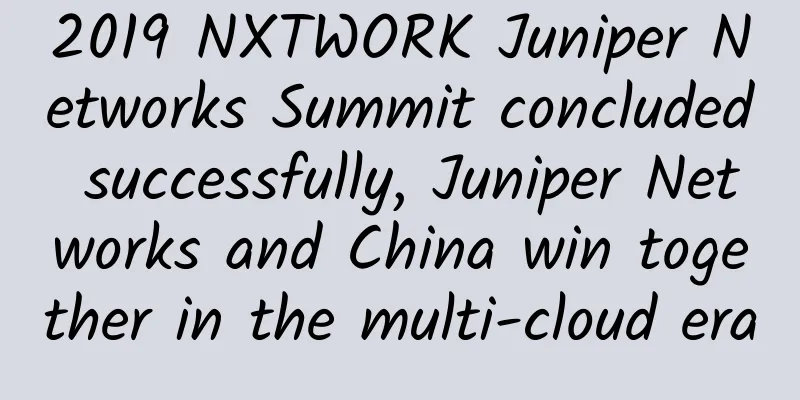Building a native cloud to truly realize the benefits of NFV

|
The goal of network function virtualization in the last five years is set out quite clearly in a white paper jointly published by network operators, namely to significantly reduce the capital and operating costs associated with deploying communications services. Although NFV is developing at an astonishing pace, the vast majority of efforts since its emergence have been focused on management and orchestration. The virtualized network functions of NFV are actually lagging behind management and network orchestration. The approach adopted by most vendors is to simply migrate the existing product code base to virtual machines (VMs) to meet the goal of so-called virtual network functions, but this is not the case at all. The advantage of virtual machines is that they complement the shortcomings of traditional communication software components along with the emerging NFV infrastructure, and traditional equipment built on dedicated hardware can work more easily in a common virtualized environment. However, these hypervisor-based hardware virtualization technologies require significant capital investment and lack failsafe measures, and the lack of redundancy protection reflects that today's approach is not virtualization. As a result, the solution cannot meet the cost savings goals that communication service providers want to achieve, and they must change every aspect of their business to support this new model.
Native cloud virtual network functions (VNFs) start from the basics, using highly scalable, web-centric design patterns and practices. However, with the unique needs of telecommunications services and infrastructure, these approaches must be extended to support distributed state and asynchronous message processing. With this foundation, native cloud VNFs are not limited to hardware-based virtual machine deployments in private clouds. Leveraging efficient lightweight containers, instantiated in a fraction of the time required for virtual machines, it can be deployed in public clouds or public/private cloud hybrid environments, providing on-demand capacity and failover only when needed. Together with highly automated commercial container cluster orchestration, this solution is more cost-effective than earlier NFV solutions while greatly improving the agility of the overall service. The migration to native cloud network services should be an opportunity to completely abandon the traditional monolithic software architecture and adopt a microservices-based architecture. In the field of NFV, microservices are smaller, autonomous, and larger components of VNFs. They can be developed independently of larger network functions or jointly developed by different vendors to provide the best solution. In addition, through fine forwarding or service chaining, microservices can be reused across multiple different network functions, eliminating the duplication of public network element functions. Microservices are essential for implementing horizontal expansion that meets user and traffic needs. In addition, they are the basis for service enhancement and upgrades in a DevOps manner. In summary, cloud-native virtual network functions built and deployed in a container environment using microservices can theoretically achieve the best cost-effective scale. Services can be started quickly, and when part of the service goes down, fault isolation can be better achieved. In addition, microservices can be added as needed to handle increased capacity or backup needs. So what services can benefit greatly from solutions delivered using cloud-native VNFs? Network operators have already begun deploying and delivering 5G mobile connectivity and services. This next generation of mobile connectivity cannot run on today’s network functions, which are often inflexible, expensive to scale, and expensive to upgrade. Industry standards body ETSI says 5G networks need to be highly scalable, able to provide ultra-low latency connections and support a large number of concurrent sessions. In addition, network performance must be reliable and supported by strong security policies. Basically, 5G is more than just a RAN upgrade, it requires a new type of core network to deliver the service, scale, security, and quality of experience requirements. While 5G requires a change in the way networks are built, which will drive the need for scalable, configurable, cloud-native VNFs, the development of LTE-based services has already pushed networks to their limits. With the increase in IoT and smart home applications, there is an urgent need for the development of network functions that are designed to fully utilize the cloud rather than simply reside in the cloud. Cloud-native IMS core and edge session controllers can bring real-time value to operators who want to extend IMS functions to the enterprise. As more and more mobile devices are connected to the network and the IoT industry is booming, consumers will have higher demands on network operators than ever before. We are entering a new era of communications, an era that requires 5G scale and cost efficiency, which requires the implementation of NFV to be based on native cloud VNFs, because only native cloud virtual network functions can truly realize NFV. |
<<: 10 good ways to optimize mobile pages for developers
Recommend
Major opportunities and challenges of 400G Ethernet
400G Ethernet is here. It is certified by the IEE...
VMware Unveils Innovations to Help Telecom Operators Modernize Their Networks
In today's digital economy era, it has become...
Game software crashes and reports errors every day? A magic tool that solves the problem with one click
[[349399]] Many friends have encountered the prob...
A brief history of the development of the iSCSI storage protocol
iSCSI stands for Internet Small Computer System I...
Why are miners rushing to buy graphics cards instead of CPUs? When will the graphics card shortage end?
[[383936]] Recently, it has been a nightmare for ...
Wu Zhongjie: How to become an excellent network engineer
[51CTO.com original article] Today I want to shar...
Verizon launches 5G private network in the United States and officially launches commercial use
Verizon Business recently launched its first comm...
LOCVPS Double 11 Preheating: 30% off for all items/50% off for some items, top up 300 yuan and get 50 yuan free
LOCVPS (Global Cloud) is a Chinese VPS service pr...
How to effectively manage network communication data? Egress traffic monitoring can reduce the burden on the network
Informatization has gradually penetrated into all...
Justhost newly launched Singapore node, 20% discount, monthly payment starts from US$5.2
Strictly speaking, the Singapore node is not a ne...
ONE VPS 50% off for the first month, 1G unlimited traffic 9 data center VPS starting from $2 for the first month
The last time I shared information about ONEVPS w...
The most feared problems when migrating from data center to IDC data center
1. Introduction When an enterprise wants to chang...
New 5G applications: “factory of the future” is just around the corner
Qualcomm's recent "What's Next In 5G...
Science article! What is 5G?
1 Let me start with the reason. Yesterday, I saw ...









